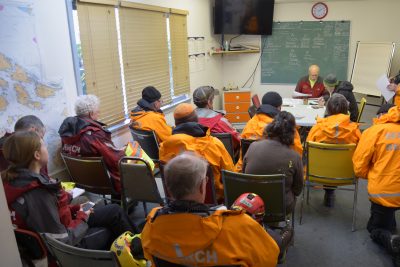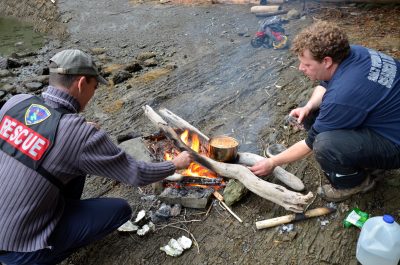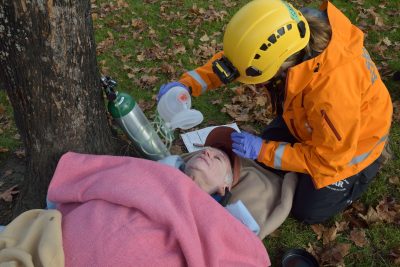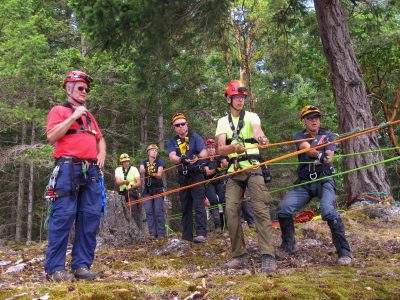Training
Ground Search and Rescue (GSAR)
The Emergency Management of BC (EMBC) contracted the Justice Institute of British Columbia to create the 80-hour GSAR-certification course, which all members must pass. The course is then delivered by senior members of the group, and covers these general topics:
- Search and Rescue in BC
- Search Organization: initiating, search progression, and termination
- Wilderness Navigation: maps, compass, map and compass
- Searcher Skills: survival, communications, rope management, tracking, helicopter safety, avalanche safety, and evacuation
- Search Tactics: Type 1 (initial response), Type 2 (sweep), Type 3 (closed grid), and Shoreline
There are also specialized training opportunities in leadership, first aid, and high-angle rope rescue.
Leadership
Successful searches require strong leadership. Our most senior level of leadership is the Search and Rescue Manager (SARM), who organizes and conducts the search on behalf of the requesting agency, typically the RCMP.
The next level of operational leadership is the Ground Search Team Leaders (GSTL). This person will oversee 2-6 other members with an assistant team leader (ATL).
Other specialties, like high-angle rope rescue, also have special team leaders.
To occupy any of these leaders roles members need to complete specific certified training. These courses are typically delivered on Vancouver Island over a weekend.
First Aid
All SAR volunteers must have first aid/CPR training. GSAR volunteers are required by EMBC to have at least 8-hours of first aid training, but our volunteers undertake 16-hours of first aid, CPR and SAR-specific training.
Our members who have either First Responder- (FR) or Emergency Medical Responder (EMR)-level certifications provide additional training to the team. We also have guest speakers on subjects ranging from hypothermia, spinal injury management, patient packaging, medical conditions and fracture management.
High Angle Rope Rescue
There are four levels of training: Rope Rescue Aware, Rope Rescue Technician 1 and 2, and Rope Rescue Instructor. Skills taught include:
- theory (forces, safety factors, strength of various components)
- anchors, knots, and rope management
- lower and raising systems
- stretcher attendant systems
- high-angle rescue techniques and systems
Tracking
This extremely difficult set of skills is rare and hard to maintain. Hours of course work and practice are required to achieve certification. Currently, three courses of 20-hours each are required to reach Track Aware status. With constant practice and use of these skills a member can acquire Tracker 1, Tracker 2, and Sign Cutter status. The BC Tracking Association oversees these certifications.
Adventure Smart
An important component of Search and Rescue is public awareness and prevention. To that end, we have two programs that our members are trained to offer under the federal AdventureSmart program: Hug-A-Tree and Survive Outside. The Hug-A-Tree program is delivered to elementary school students, while Survive Outside is aimed at adults.








